This article was co-authored by wikiHow Staff. Our trained team of editors and researchers validate articles for accuracy and comprehensiveness. wikiHow's Content Management Team carefully monitors the work from our editorial staff to ensure that each article is backed by trusted research and meets our high quality standards.
wikiHow marks an article as reader-approved once it receives enough positive feedback. In this case, 100% of readers who voted found the article helpful, earning it our reader-approved status.
This article has been viewed 128,707 times.
Learn more...
Spirulina is a type of blue-green algae that’s loaded with nutrition: protein, antioxidants, and numerous vitamins and minerals. It is a simple organism that grows easily in warm water. However, because algae can absorb toxins found in the environment, some people opt to grow their own spirulina at home in safe and controlled conditions. Others simply prefer the taste and texture of fresh spirulina. Once you have a few supplies set up, your spirulina colony will pretty much take care of itself.
Steps
Gathering Supplies
-
1Get a tank. Most home growers find that a standard size aquarium is perfectly adequate as a space to grow spirulina in. A tank that size will supply a family of four with plenty of spirulina.
- You can grow spirulina in larger tanks, or even in a basin or pool outdoors (if you live in a warm climate). However, it will be easier to manage the spirulina culture indoors in a small tank.
-
2Gather harvesting equipment. A spirulina colony can appear thick, but it’s mostly water. Once it’s ready to eat or use, you’ll want to squeeze out the excess water. For most home growers who will want to use only a small amount of fresh spirulina at a time, a fine cloth or mesh will work just fine. In addition, you'll need a scoop to get the spirulina out of the tank.
- If you want to harvest larger amounts of spirulina to dry, get a larger supply of fine cloth or mesh to make things easier.
Advertisement -
3Purchase minerals to encourage algal growth. Trying to grow spirulina in plain water won’t necessarily lead to great results. To have an optimal colony, you’ll need to add specific minerals. You don’t have to be an expert, though--you can buy premixed mineral “food” for spirulina from health and organic stores as well as online. Make sure that it contains:
- Sodium bicarbonate
- Magnesium sulfate
- Potassium nitrate
- Citric acid
- Salt
- Urea
- Calcium chloride
- Iron sulfate
- Ammonium sulfate
-
4Buy a spirulina culture. To get your own spirulina colony going, you’ll need a bit of live spirulina as a starter. Check with your local or favorite online health food or organic supplies store and ask for a spirulina starter kit.
- Spirulina starter cultures are usually as simple as a bottle containing spirulina algae in its medium (water).
- Buy spirulina cultures only from sources you trust. Since spirulina can absorb heavy metals and other toxins, you want to ensure that the starter supply has come from a safe source.
Preparing Your Tank
-
1Position your tank in a warm, bright place. If possible, set your tank so that it is near a south-facing window that gets lots of sunshine. Spirulina algae need plenty of light and warmth to grow well.
- Some spirulina growers use artificial light, but results will be better with natural light.
-
2Prepare your medium. Spirulina growers refer to the “medium” the algae grows in, but this really just means the water in the tank, with the mineral “food” added. Fill your tank with filtered water, and add the mineral mix according to the package instructions.[1]
- You can run tap water through a standard faucet filter (such as a Brita or Pur filter), and use this for your tank.
- If your water is chlorinated, you should de-chlorinate it using supplies found at aquarium supply stores.
-
3Check the temperature of the medium. Ideally, the temperature in your tank should be around 35°C (95 F), but above 38°C (100.4 F) is too warm. Use an aquarium thermometer to make sure your tank will provide the right temperature for your spirulina.
- Spirulina can tolerate lower temperatures without dying, but will do best in warm environments.
- If your tank is too cold, you can warm it with an aquarium heater, which can be found at an aquarium supply or pet store.[2]
-
4Add the spirulina starter. You should follow the exact instructions that come with your bottle of spirulina starter to be sure, but usually it’s simple to add the starter culture. Generally, you just pour one half to three-fourths of the bottle into the medium in your tank.
Maintaining Your Spirulina Colony
-
1Watch your spirulina colony grow. At first, your spirulina colony will seem thin, but over time it will thicken and expand in size. Most of the time, you won’t have to do anything to your colony other than let it grow!
- If your colony doesn’t seem to be growing well, test the pH of your tank, which should be around 10 when the spirulina is harvestable. If the pH is off, you may need to add more mineral “food.”
- You can find pH test strips at aquarium supply stores or online.
-
2Agitate the tank occasionally. Your spirulina will need oxygen to thrive. Some growers will use an aquarium pump to ensure a supply of oxygen, but this isn’t strictly necessary. To help air get into the water of your tank, you can simply stir the medium occasionally.
-
3Harvest your spirulina after about 3-6 weeks. Once your spirulina is thriving, you can start taking some out to consume. All you have to do is scoop some out! Most people find that about a spoonful of spirulina at a time is enough if you are consuming it fresh.
-
4Filter your spirulina through a fine cloth. Place the spirulina you took from your tank onto the cloth. Hold it over a sink or bowl and gently squeeze out the excess water. You’ll be left with a thick green paste. Use this fresh spirulina in smoothies, top your favorite foods with it, or enjoy it all by itself!
-
5Replenish the spirulina colony's food. Each time you take some spirulina out of your tank, make sure to add a bit of the mineral mixture back in, in about equal measure. For instance, if you take out a tablespoon of spirulina, add about a tablespoon of the medium back in.
Community Q&A
-
QuestionHow do I increase/decrease the pH of water?
 NinoxTop AnswererTo increase the pH of water, you can add sodium bicarbonate (NaHCO3). To decrease the pH of water, simply add vinegar.
NinoxTop AnswererTo increase the pH of water, you can add sodium bicarbonate (NaHCO3). To decrease the pH of water, simply add vinegar. -
QuestionI have a water ionizer to make alkaline water - do I need to put minerals in the tank?
 Community AnswerIt would be a good idea. Spirulina, like other living organisms, requires a variety of minerals to sustain life. A water ionizer alone will not provide all these.
Community AnswerIt would be a good idea. Spirulina, like other living organisms, requires a variety of minerals to sustain life. A water ionizer alone will not provide all these. -
QuestionWhere can I sell spirulina?
 Community AnswerYou can sell it at your local farmer's market, or perhaps on eBay or Etsy.
Community AnswerYou can sell it at your local farmer's market, or perhaps on eBay or Etsy.
References
About This Article
Spirulina is a type of blue-green algae that’s loaded with nutrition. It’s a simple organism that grows easily in warm water, so once you have a few supplies set up you can grow your own Spirulina at home. Most home growers use a standard size aquarium to grow their spirulina. When it’s time to harvest your spirulina, you’ll need to separate it from the water, so have a fine cloth or mesh ready as well as a scoop to get it out of the tank. To have an optimal colony, you’ll need to add specific minerals, so buy a premixed mineral “food” that includes sodium bicarbonate, citric acid, urea, and salt. Finally, to get your spirulina colony going, you’ll need a bit of live spirulina as a starter, which you can get from a health food store. Once you have your supplies, you’ll need to set your tank in a warm, bright place. Add water, your mineral food, and your spirulina starter, and watch your colony grow. To learn how to replenish your spirulina colony’s food, keep reading!

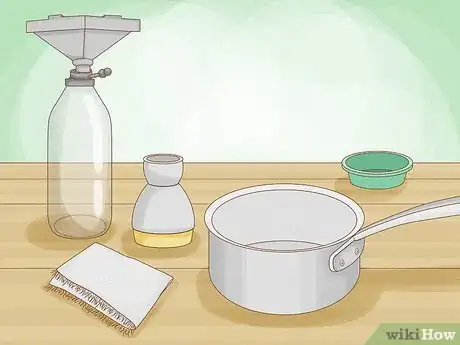
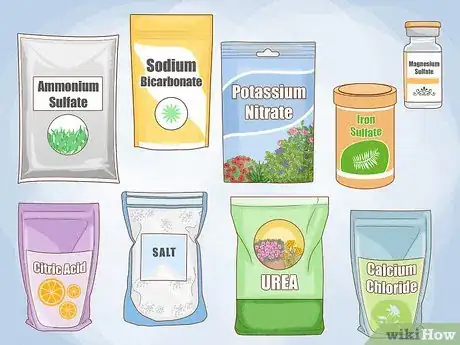


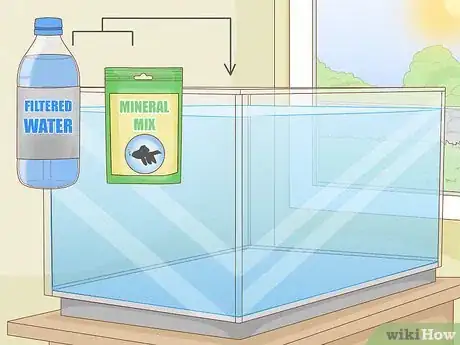
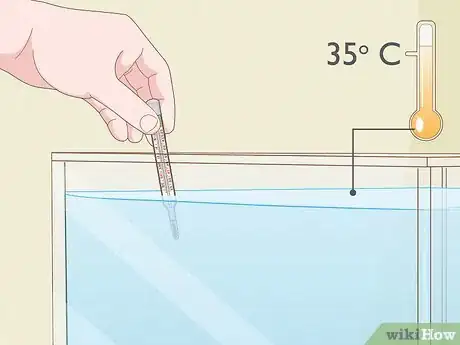
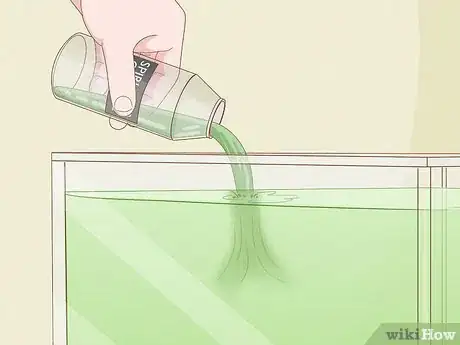

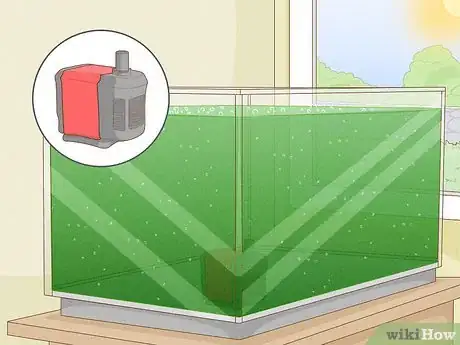
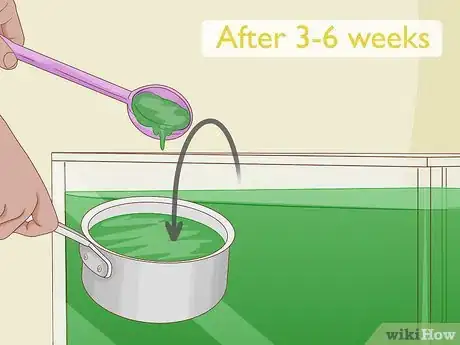
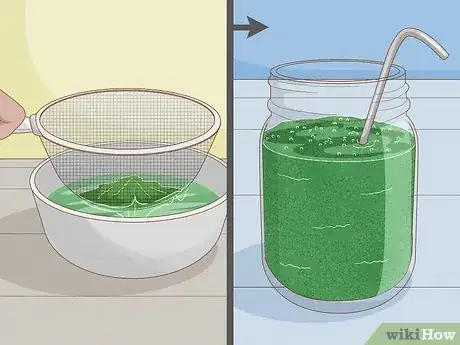
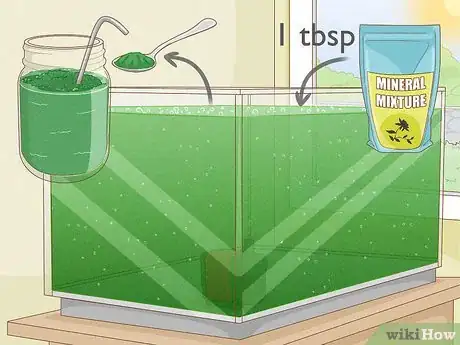

























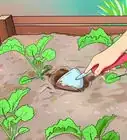



































Medical Disclaimer
The content of this article is not intended to be a substitute for professional medical advice, examination, diagnosis, or treatment. You should always contact your doctor or other qualified healthcare professional before starting, changing, or stopping any kind of health treatment.
Read More...